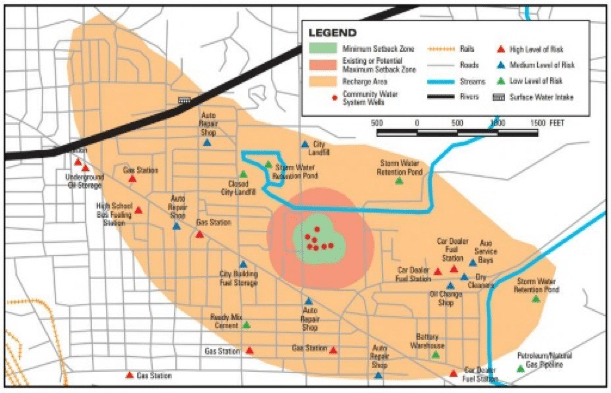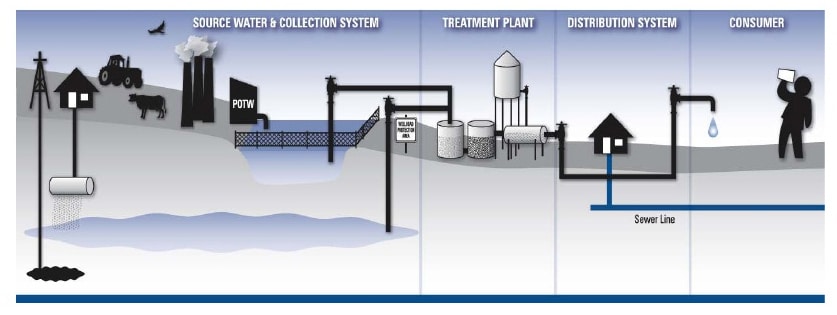Intersection of Roads and Drinking Water
Opportunities for Collaboration Between State Programs

Intersection of Roads and Drinking Water: The table below provides opportunities for “intersection” between roads and drinking water. Together, state highway and state drinking water programs can:
- Share maps, water quality data, and information on roads and delineated drinking water protection areas (for both surface and ground water).
- Provide information about and leverage potential funding sources.
- Assist with implementation and help target state DOT initiatives for protecting drinking water.
- Partner to share information among states, and conduct outreach to municipalities.
Intersection of Roads and Drinking Water
|
Intersection of Roads and Drinking Water |
State Highway Programs |
State Drinking Water Programs |
|
Map overlays |
Roads |
Drinking water protection areas |
|
Development/planning |
Road construction/design Stormwater runoff |
Land use protections/conservation to prevent contamination |
|
Best practices |
Road maintenance, salt storage, calibrated de-icing application |
Remediation and mitigation actions to address potential contaminants |
|
Spills/Emergency |
Notification, response, containment, and environmental cleanup |
Monitoring/early warning systems shutoff/treatment/decontamination |

Road Salt and Drinking Water: In the U.S., an average of more than 20 million tons of road salt are applied to roads, parking lots, sidewalks and driveways each year. Studies have shown that road and parking lot de-icing applications have in some cases doubled chloride concentrations in streams and have negatively impacted shallow aquifers used for drinking water. The following table provides information about impacts from road salt based on each element of the multiple barrier approach to ensure safe drinking water.
| Multi-Barrier Approach to Ensure Safe Drinking Water from Source to Tap | Road Salt Impacts on Drinking Water |
| Protection from contamination (from chloride, sodium, and additives in road salt and deicing compounds) | Surface water: Alkaline rivers and mobilization of contaminants from soils and sediments.
|
| Ground water: Mobilization of arsenic and other natural contaminants in aquifers.
|
|
| Drinking water treatment | High treatment costs for reverse osmosis, distillation, or de-ionization and for disinfection by-products.
|
| Distribution system delivery | Leaching of metals (e.g., lead and copper) from pipe corrosion in the distribution system.
|
| Community Involvement | Working with (transportation) partners and the public to reduce and tailor the use of salt and de-icing applications.
|
Drinking water health advisory and standards for chloride, sodium, and ferrocyanide (additive): There are currently no federal regulatory requirements for maximum contaminant levels of sodium or chloride under the Safe Drinking Water Act for finished water. However, EPA has established:
- A health advisory level of 20mg/L for people on salt restricted diets.
- A secondary (aesthetic) drinking water standard of 250 mg/L for chloride ions and 250 mg/L for sulfate ions, for salty taste.
In addition, EPA added ferrocyanide (a road salt additive) to its list of toxic pollutants under section 307(a) of the Clean Water Act in 2003.
To learn more about how you can start coordinating with state drinking water programs on roads and road salt, contact Deirdre White of ASDWA at dwhite@asdwa.org

